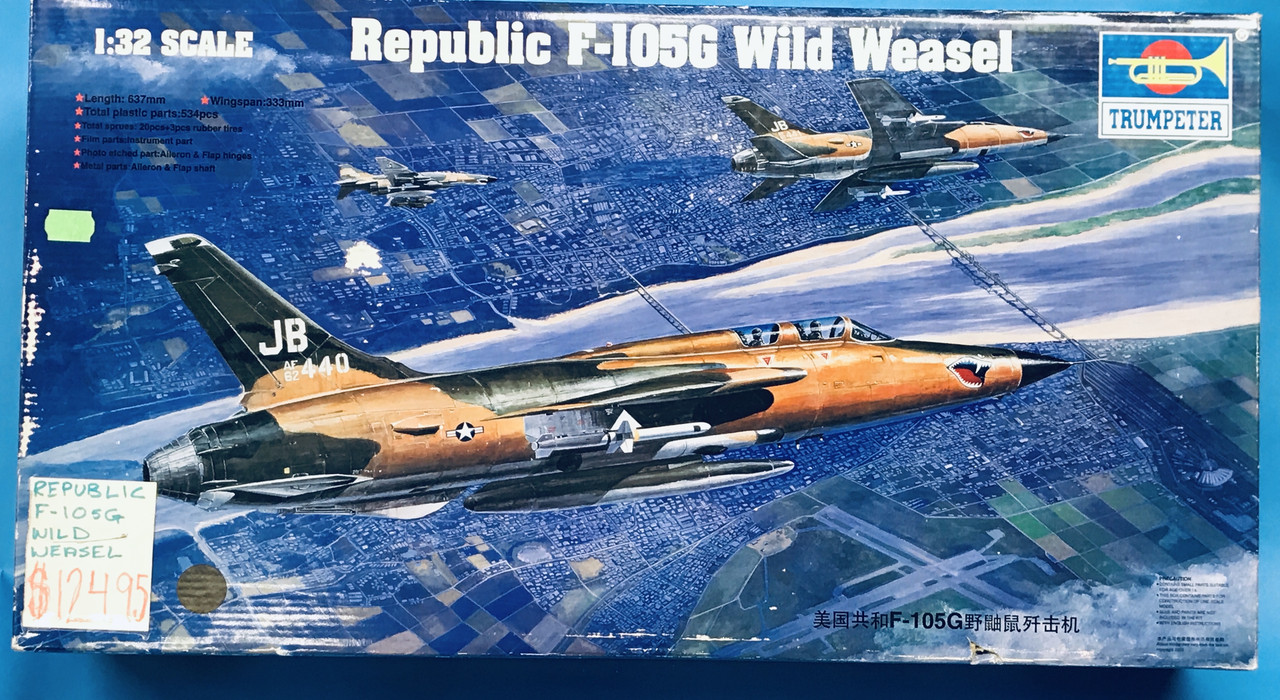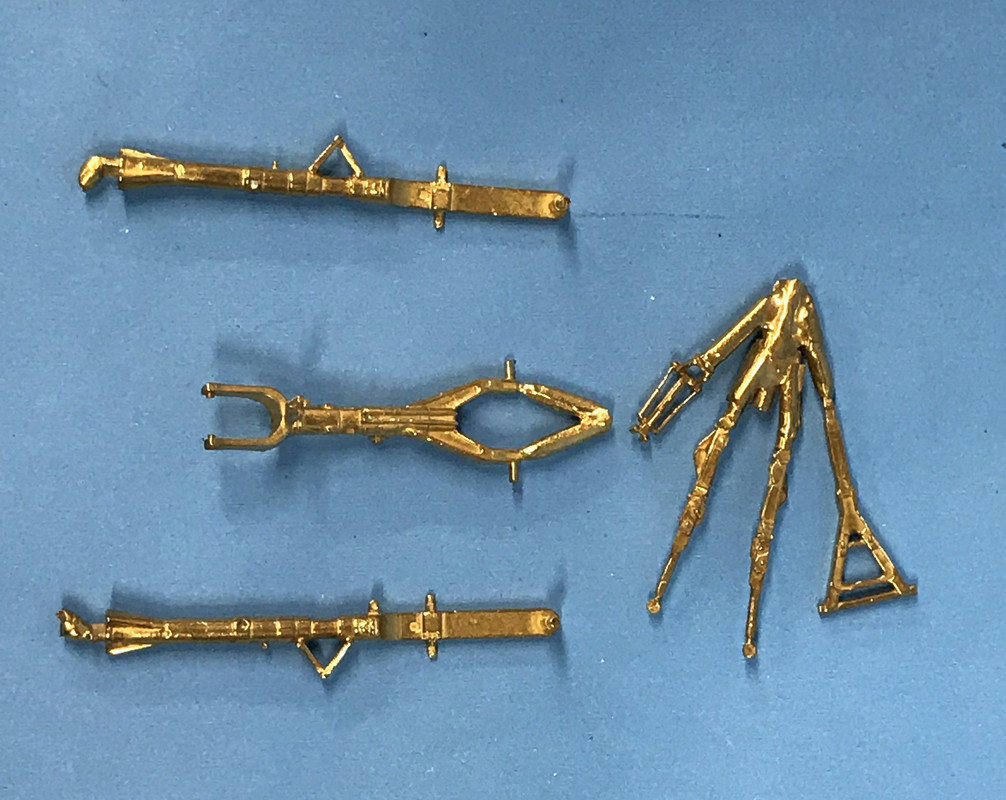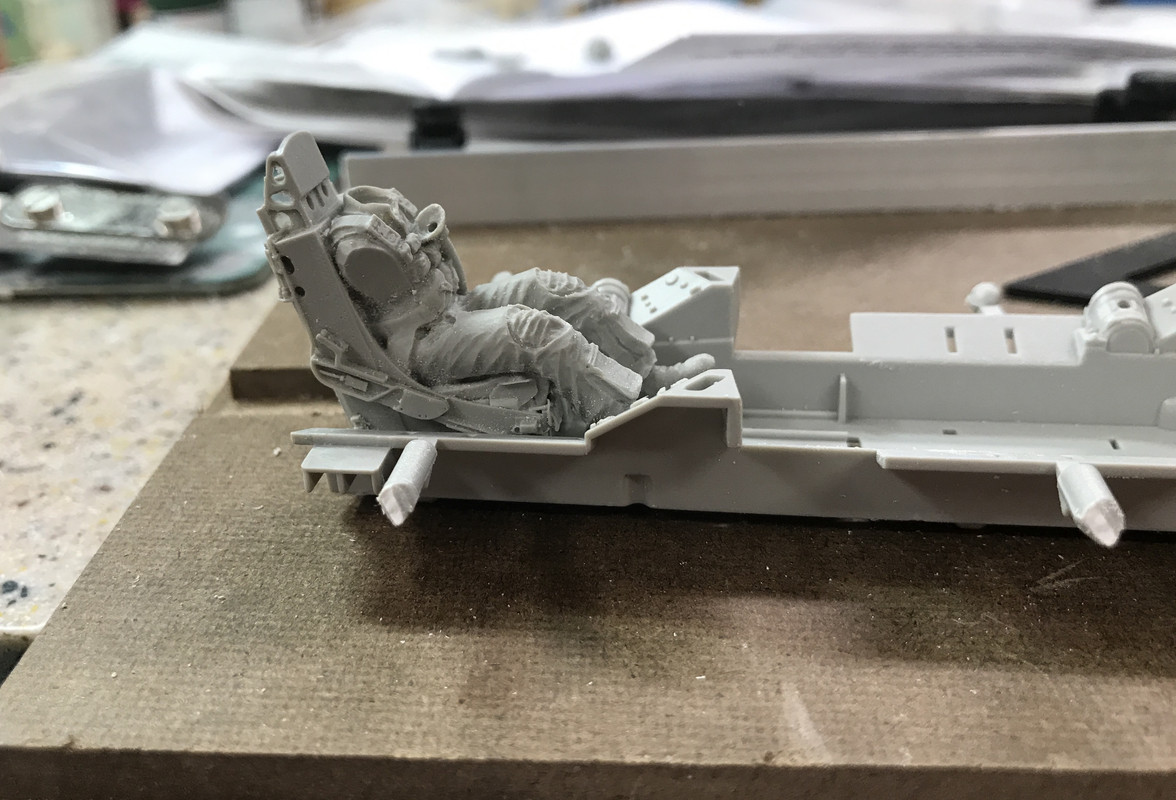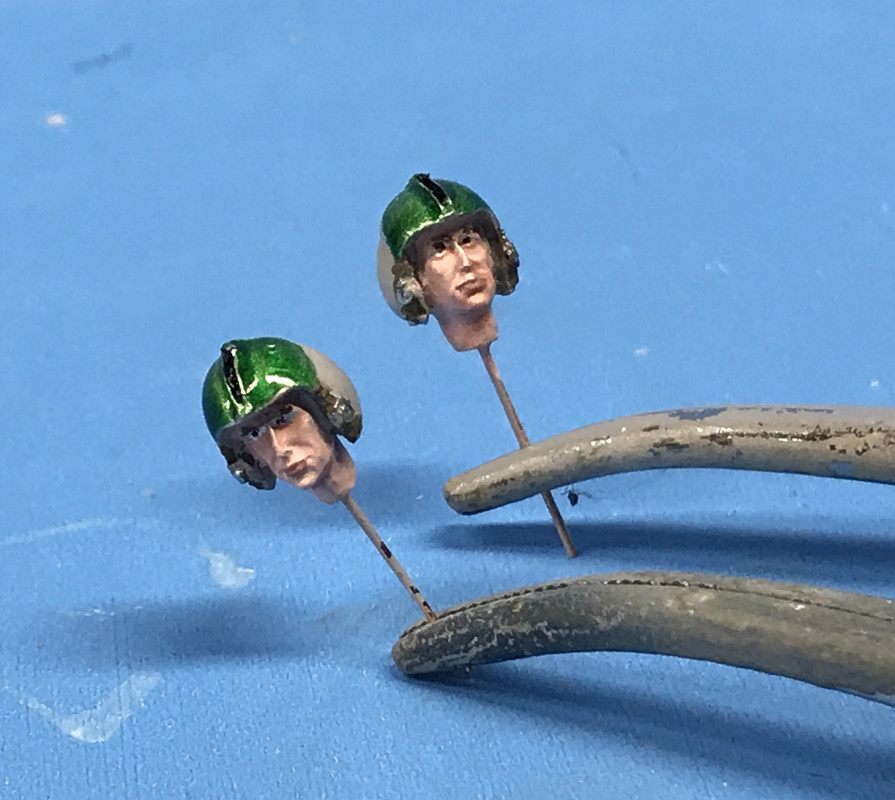Happy New Year!
I’m not starting this build right now so don’t get too excited, but I have the kit in my possession. I have to first finish the Bronx Victorian which I’ve invested $$$ heavily.
The Wild Weasel is a commision build for the same person for whom I build that nice “Yankee Lady” Monogram 1:48 B-17G a couple of years ago. He was able to buy this new model for a very low price since Allied Hobbies in Philadelphia is going out of business and was selling things for 70% off. This time I’m getting paid! We’re bartering… He’s going to give me a Tamiya 1:32 De Havalind Mosquito kit. I’ve really wanted to build that plane!

The kit shows $124. He got it for $50. Good deal. It’s an older Trumpeter kit and I’m expecting the usual old Trumpeter problems. This will be my 3rd Trumpeter large scale plane so I’m getting used to them. It has those finicky PE flight surfaces hinges. On the TBM I just glued the flaps and ailerons, but did get a movable rudder and elevators. On this one, I’ll try that again.
I’ve ordered some aftermarket for the F-105G including two resin ejection seats with pilots, Eduard cockpit details, and G-Force brass landing struts. The model is big and heavy and I’ve read that the plastic gear isn’t sturdy enough. It has a complete J-75 turbo-jet included which will be completely hidden so I’m either going to cut some access hatches to show it off or make a service rack and mount it outside the plane. I will attempt to super-detail the engine and the other usual places. The plane has a fully detailed Gatling gun and I will show that off too.
So sit tight. I will be back at this thread in a month or so when the Bronx Building is complete.
And after it, I will also regale you with the construction of the Mossie.


























